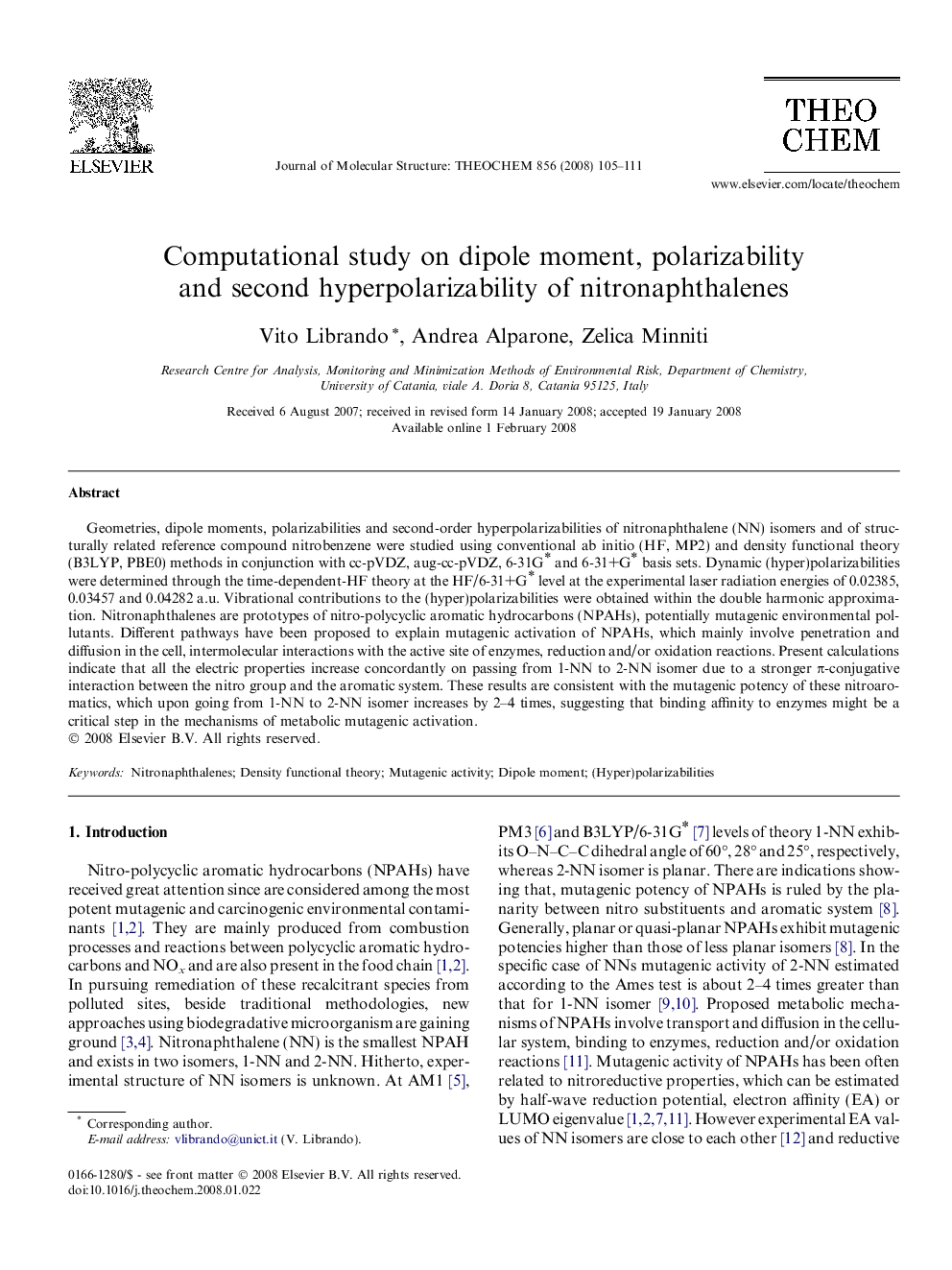| Article ID | Journal | Published Year | Pages | File Type |
|---|---|---|---|---|
| 5418378 | Journal of Molecular Structure: THEOCHEM | 2008 | 7 Pages |
Abstract
Geometries, dipole moments, polarizabilities and second-order hyperpolarizabilities of nitronaphthalene (NN) isomers and of structurally related reference compound nitrobenzene were studied using conventional ab initio (HF, MP2) and density functional theory (B3LYP, PBE0) methods in conjunction with cc-pVDZ, aug-cc-pVDZ, 6-31Gâ and 6-31+Gâ basis sets. Dynamic (hyper)polarizabilities were determined through the time-dependent-HF theory at the HF/6-31+Gâ level at the experimental laser radiation energies of 0.02385, 0.03457 and 0.04282Â a.u. Vibrational contributions to the (hyper)polarizabilities were obtained within the double harmonic approximation. Nitronaphthalenes are prototypes of nitro-polycyclic aromatic hydrocarbons (NPAHs), potentially mutagenic environmental pollutants. Different pathways have been proposed to explain mutagenic activation of NPAHs, which mainly involve penetration and diffusion in the cell, intermolecular interactions with the active site of enzymes, reduction and/or oxidation reactions. Present calculations indicate that all the electric properties increase concordantly on passing from 1-NN to 2-NN isomer due to a stronger Ï-conjugative interaction between the nitro group and the aromatic system. These results are consistent with the mutagenic potency of these nitroaromatics, which upon going from 1-NN to 2-NN isomer increases by 2-4 times, suggesting that binding affinity to enzymes might be a critical step in the mechanisms of metabolic mutagenic activation.
Keywords
Related Topics
Physical Sciences and Engineering
Chemistry
Physical and Theoretical Chemistry
Authors
Vito Librando, Andrea Alparone, Zelica Minniti,
